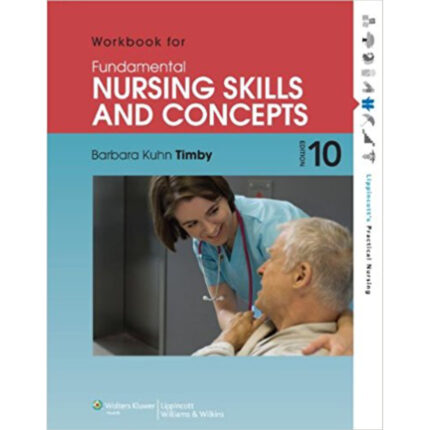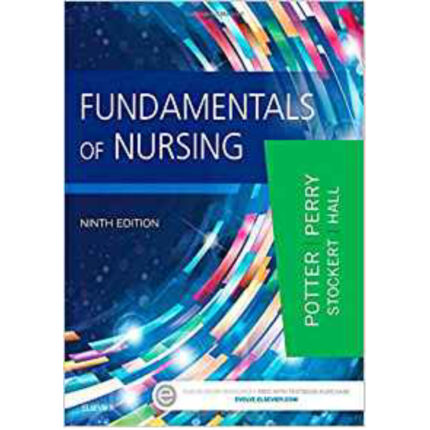Fundamental Of Nursing 8th Edition By Potter – Test Bank
Chapter 11 Developmental Theories
Test Bank
MULTIPLE CHOICE
1. When caring for a middle-aged adult exhibiting maladaptive coping skills, the nurse is trying to determine the cause of the patient’s behavior. From a growth and development perspective, what should the nurse recall?
a. Individuals have uniform patterns of growth and development.
b. Health is promoted based on how many developmental failures a patient experiences.
c. Culture usually has no effect on predictable patterns of growth and development.
d. When individuals experience repeated developmental failures, inadequacies sometimes result.
ANS: D
“If individuals experience repeated developmental failures, inadequacies sometimes result” is a true statement. Developmental failures could manifest with ineffective coping skills. However, when an individual experiences successes, health is promoted. Patients have unique patterns of growth and development that are not uniform. Nurses must consider the influence of culture and context on growth and development.
DIF: Knowledge | Remember REF: 131
OBJ: Discuss factors influencing growth and development. TOP: Assessment
MSC: Health Promotion and Maintenance
2. The nursing instructor will need to provide further instruction to the student who states
a. “Intellectual development is affected by cognitive processes.”
b. “Socioemotional processes can influence an individual’s growth and development.”
c. “Breast development is an example of a change resulting from biological processes.”
d. “An individual’s biological processes determine physical characteristics and do not affect growth and development.”
ANS: D
Human growth and development is a complex pattern of movement that involves changes in biological, cognitive, and socioemotional processes. Cognitive processes comprise changes in intelligence, use of language, and development of thinking. Socioemotional processes consist of variations in personality, emotions, and relationships with others. Height and weight, development of gross and fine motor skills, and sexual maturation resulting from hormonal changes during puberty are examples of changes resulting from biological processes.
DIF: Understand REF: 131
OBJ: Discuss factors influencing growth and development. TOP: Assessment
MSC: Health Promotion and Maintenance
3. Which of these statements would be most appropriate for a nurse to state when assessing an adult patient for growth and developmental delays?
a. “How many times per week do you exercise?”
b. “Are you able to stand on one foot for 5 seconds?”
c. “Would you please describe your usual activities during the day?”
d. “How many hours a day do you spend watching television or sitting in front of a computer?”
ANS: C
Understanding normal growth and development helps nurses predict, prevent, and detect deviations from patients’ own expected patterns. The nurse can then compare expected patterns of activity based on age with the patient’s stated activity patterns to determine deviations from the patient’s own expected patterns. Asking the patient to describe his/her usual daily activities will provide the nurse with useful information about the patient’s own expected patterns. How many hours are spent watching television or in front of a computer and how many times the patient exercises in a week are closed-ended questions. These questions would not provide the nurse with as much information about the patient’s expected patterns when his/her stated patterns are compared with expected patterns for the patient’s age group to detect delays.
DIF: Apply REF: 130
OBJ: Discuss factors influencing growth and development. TOP: Assessment
MSC: Health Promotion and Maintenance
4. The nurse knows that a priority reason for being knowledgeable about biophysical developmental theories is to
a. Understand how the physical body grows.
b. Predict definite patterns of cognitive development.
c. Anticipate how patients’ social behaviors develop.
d. Describe the process of psychological development.
ANS: A
Biophysical development refers to how our physical bodies grow and change. Nurses and other health care providers are able to quantify and compare the changes that occur as a newborn infant grows into adulthood against established norms to detect abnormalities. Biophysical development refers to physical growth, not cognitive development, social behaviors, or psychological development.
DIF: Knowledge REF: 131 OBJ: Describe biophysical developmental theories.
TOP: Assessment MSC: Health Promotion and Maintenance
5. While assessing an 18-month-old toddler, the nurse distinguishes normal from abnormal findings by remembering that Gesell’s theory of development states
a. “The developmental stage of the toddler is affected solely by environmental influence.”
b. “Developmental patterns are not affected by gene activity.”
c. “Skill development should be identical to that of other toddlers in the playroom.”
d. “Environmental influence does not affect the sequence of development.”
ANS: D
Gesell’s theory of development states that environment plays a part in child development, but it does not have any part in the sequence of development. Other factors influencing growth and development include biological, cognitive, and socioemotional processes. Environmental factors support, change, and modify the pattern of development, but they do not generate progressions of development. Each child’s pattern of growth and development is unique and is directed by gene activity. Not every child develops certain skills at the same time. Children grow according to their own genetic blueprint.
DIF: Understand REF: 131 OBJ: Describe biophysical developmental theories.
TOP: Assessment MSC: Health Promotion and Maintenance
6. When utilizing Freud’s psychoanalytical/psychosocial theory, the nurse recalls that
a. Adult personality is the result of resolved conflicts between sources of sexual pleasure and the mandates of reality.
b. Development occurs throughout the life span and focuses on psychosocial stages.
c. The genital stage precedes the phallic stage of development.
d. Problems evident in adult life are due to early successes and resolution of earlier developmental stages.
ANS: A
Freud believed that adult personality is the result of how an individual resolved conflicts between sources of sexual pleasure and the mandates of reality. Freud had a strong influence on Erik Erikson, but Erikson’s theory differed from Freud’s in that it focused on psychosocial stages rather than psychosexual stages. Freud’s five stages of psychoanalytical development in sequential order include oral, anal, phallic, latency, and genital. The phallic stage precedes the genital stage. In theory, problems in adult life would be due to unresolved conflicts and failures.
DIF: Knowledge REF: 131-132
OBJ: Describe and compare the psychoanalytical/psychosocial theories proposed by Freud and Erikson. TOP: Assessment MSC: Health Promotion and Maintenance
7. The nurse is teaching a young adult couple about promoting the health of their 8-year-old child. The nurse knows that the parents understand the developmental stage their child is in according to Erikson when they state, “We should
a. Provide proper support for learning new skills.”
b. Encourage devoted relationships with others.”
c. Limit choices and provide harsh punishment for mistakes.”
d. Not leave our child at school for longer than 3 hours at a time.”
ANS: A
An 8-year-child would be in the industry versus inferiority stage of development. During this stage, the child needs to be praised for accomplishments such as learning new skills. Developing devoted relationships is part of the identity versus role confusion stage, usually occurring during puberty. During the autonomy versus shame and doubt stage, limiting choices and harsh punishment lead to feelings of shame and doubt. Separation anxiety is usually a part of the trust versus mistrust stage.
DIF: Understand REF: 131-132
OBJ: Describe and compare the psychoanalytical/psychosocial theories proposed by Freud and Erikson. TOP: Evaluation MSC: Health Promotion and Maintenance
8. Jean Piaget’s cognitive developmental theory focuses on four stages of development, including
a. Formal operations.
b. Intimacy versus isolation.
c. Latency.
d. The postconventional level.
ANS: A
Jean Piaget’s theory includes four stages in sequential order: sensorimotor, preoperational, concrete operations, and formal operations. Intimacy versus isolation is part of Erik Erikson’s psychosocial theory of development. Latency is stage 4 of Freud’s five-stage psychosexual theory of development. The postconventional level of reasoning is part of Kohlberg’s theory of moral development.
DIF: Knowledge REF: 134 OBJ: Describe Piaget’s theory of cognitive development.
TOP: Assessment MSC: Health Promotion and Maintenance
9. According to Piaget’s formal operations level, a 13-year-old adolescent will likely
a. Hit other students to deal with environmental change.
b. Use play to understand her surroundings.
c. Question her parents about an upcoming presidential election.
d. Question where the ice is hiding when ice has melted in her drink.
ANS: C
In the formal operations period, adolescents and young adults begin to think about such subjects as achieving world peace, finding justice, and seeking meaning in life. Asking about a presidential election demonstrates that the adolescent is concerned about political issues that affect others besides her. Hitting would be a common schema during the sensorimotor stage of development. Using play to learn about the environment is indicative of the preoperational stage. During the concrete operations stage (ages 6 to 12 years), children are able to coordinate two concrete perspectives in social and scientific thinking, such as understanding the difference between “hiding” and “melting.”
DIF: Understand REF: 134 OBJ: Describe Piaget’s theory of cognitive development.
TOP: Assessment MSC: Health Promotion and Maintenance
10. According to Piaget’s theory of cognitive development, the nurse should allow a hospitalized 4-year-old patient to safely play with
a. The pump administering intravenous fluids.
b. The blood pressure cuff.
c. A baseball bat.
d. A book to read alone in a quiet place.
ANS: B
A 4-year-old child would be in the preoperational period. Children at this stage are still egocentric. Play is very important to foster cognitive development. Children should be allowed to play with any equipment that is safe and should be allowed to communicate feelings about their health care. The IV pump is not a safe piece of equipment for a 4-year-old child to play with. A baseball bat typically is not found in a hospital setting and is a potentially dangerous toy to play with in the hospital. The blood pressure cuff is a safer option. A 4-year-old child is of preschool age and more than likely is not able to read yet. Also, the book does not allow for any human interaction and communication if read alone.













Reviews
There are no reviews yet.